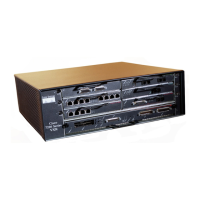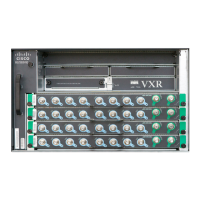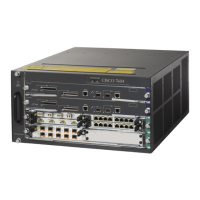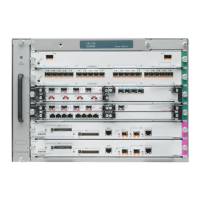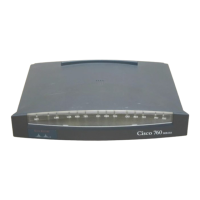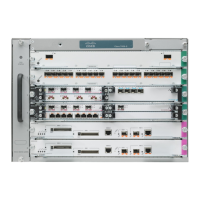Send document comments to nexus7k-docfeedback@cisco.com
3-18
Cisco Nexus 7000 Series NX-OS Interfaces Configuration Guide, Release 5.x
OL-23435-03
Chapter 3 Configuring Layer 2 Interfaces
Configuring Access and Trunk Interfaces
SUMMARY STEPS
1. configure terminal
2. default interface int-if [checkpoint name]
3. exit
4. (Optional) show interface
DETAILED STEPS
This example shows how to delete the configuration of an Ethernet interface while saving a checkpoint
of the running configuration for rollback purposes:
switch# configure terminal
switch(config)# default interface ethernet 3/1 checkpoint test8
.......Done
switch(config)#
Configuring SVI Autostate Exclude
You can configure the SVI Autostate Exclude feature on an Ethernet interface or a port channel.
You can use the Autostate Exclude option to enable or disable the port from bringing up or down the SVI
calculation and applying it to all VLANs that are enabled on the selected port.
SUMMARY STEPS
1. configure terminal
2. interface {{type slot/port} | {port-channel number}}
Command Purpose
Step 1
configure terminal
Example:
switch# configure terminal
switch(config)#
Enters configuration mode.
Step 2
default interface int-if [checkpoint
name]
Example:
switch(config)# default interface
ethernet 3/1 checkpoint test8
Deletes the configuration of the interface and restores
the default configuration. Use the ? keyword to display
the supported interfaces.
Use the checkpoint keyword to store a copy of the
running configuration of the interface before clearing
the configuration.
Step 3
exit
Example:
switch(config)# exit
switch#
Exits the configuration mode.
Step 4
show interface
Example:
switch# show interface
(Optional) Displays the interface status and
information.
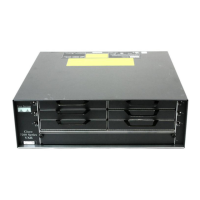
